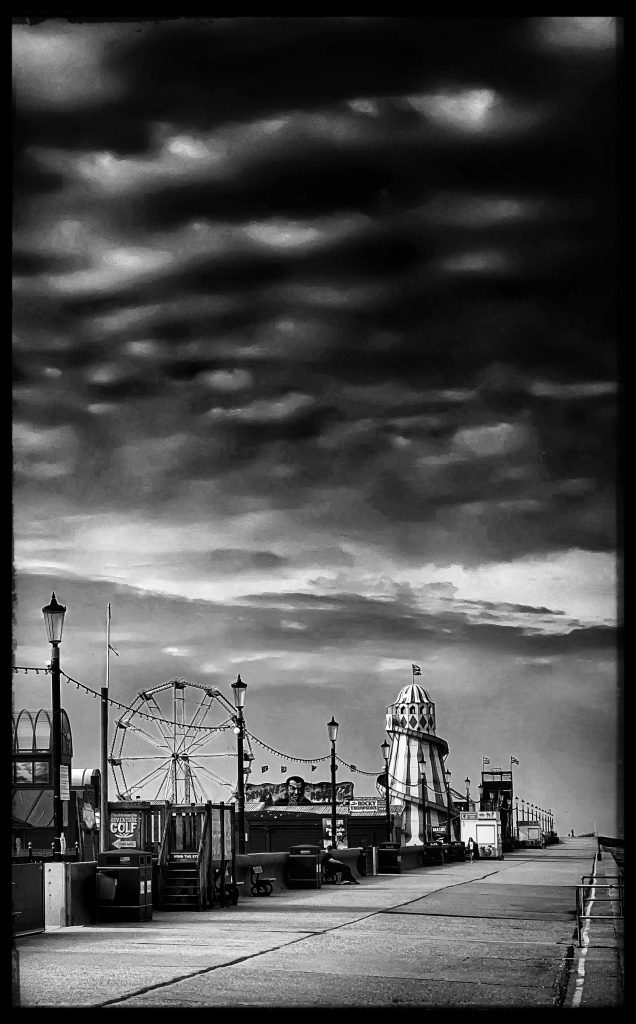Who was the Viking who decided to stay near the Norfolk coast on the road from King’s Lynn to Hunstanton?
Although people in Britain like to think of themselves as never having been slaved (“Rule Britannia” and all that), the truth is different. You could make an argument out for England having been invaded at least six times. Even if we set aside the quasi-invasion of the Dutch (the invite sent to King Billy and his wife, Mary) in 1688, the fact remains that this island has been invaded and settled on at least five other occasions in history.
The Celts from Northern France and the Netherlands came to England in around 400 BC. Between 43-410 AD the main part of the island was a north western corner of the Roman Empire. The Anglo-Saxons first came from Denmark and the coast of Holland and Germany in 449 AD, and the Scandinavians started to arrive from 789 AD onwards. And then, of course, the Norman French arrived in 1066.

Photo © James Rye 2021
Each one of these invasions had a huge impact on the nation, not just in terms of its history, but in influencing the language spoken, and in determining the names given to the places where people eventually settled to farm and raise families.
What I want to do is illustrate some of this influence by looking at the place-names along a short, 14 mile stretch of road from the town of King’s Lynn in Norfolk to the nearby seaside resort of Hunstanton – a road taken by hundreds of thousands of people each year.
Celts At The Beginning?
At the start of our journey, Lynn almost certainly comes from the Celtic word llyn meaning ‘lake’ or ‘pool’. Lynn is situated at the mouth of the Wash, and it is not difficult to imagine our Celtic ancestors being attracted by the benefits of living near tidal pools which once covered the area.
Lynn was known as Bishop’s Lynn from about 1100 when the land that the old part of the town stood on was owned by the Bishop of Norwich (Herbert de Losinga). Although King John gave the town a royal charter in 1204, it wasn’t until 1524 when the influence of the Bishop of Norwich was finally diminished and the town was given another Royal Charter by Henry VIII and became King’s Lynn in 1537.
The Anglo-Saxon Settlements
By the time place-names were beginning to get a permanence because of settled conditions and because of being able to be recorded in writing, most of the area around Lynn had been inhabited by Anglo-Saxons for hundreds of years. Although there are Scandanavian settlements in Norfolk and Suffolk, the majority of places are named after or by Anglo-Saxons (the eastern Angles). Hence the road from Lynn to Hunstanton in dominated by Anglo-Saxon names.
Gaywood – the wood where Gæga lives.
Wootton – settlement in the woods (there are lots of Woottons throughout England)
Castle Rising – either the place where Risa’s people live, or the people at the brush wood. The castle was a C12th later addition.
Babingley – the clearing where Babba’s people live
Wolferton – Wylfhere’s farm
Sandringham – the secondary homestead of Deorsige’s people on the sandy soil (see Dersingham)
Dersingham – the homestead where Deorsige’s people live (see Sandringham)
Snettisham – the homestead where Snæt lives
Heacham – This is a difficult place to pin down. Part of the name is definitely ham meaning ‘homestead’. The first element either refers to a hedge (OE hecg) or to a grating to catch fish (OE hæcc).
Hunstanton – Hunstan’s farm
The Viking In The Middle
Those of you who know the area well, especially those of you who used to make the journey before the Dersingham-Snettisham Bypass, will have noticed that one place is missing from the above list. At some point in the 9th or 10th century a man with a Scandinavian name settled in a place now known as Ingoldisthorpe (Ingialdr’s hamlet).
There are several Scandinavian settlements in Norfolk, around the River Yare for example, and many in parts of the country where the Scandinavians tended to dominate (in parts of Yorkshire, for example) but this one seems isolated. Who was he? How did he get there? When did he arrive? How did his Dersingham and Snettisham neighbours react to him? I would love to be able to tell you, but I’m afraid the answers to those questions have been lost in time.
© James Rye 2021
For more information on East Anglian Place-names, with details of the original Old English, Old Norse, Latin, and Celtic elements used in the names, see:
Rye, J. (1991) A Popular Guide to Norfolk Place-names, Larks Press
Rye J. (1997) A Popular Guide to Suffolk Place-names, Larks Press

Buy a copy of James Rye’s Norfolk Place-name Book for only £3 + P&P. Contact the author to get your copy today.

Truly interesting, thank you.
Thanks for your comment Kip.
I found this fascinating. Thank you for taking the time to write it.
Thank you Helen.
[…] See also Three Peoples on the Road […]